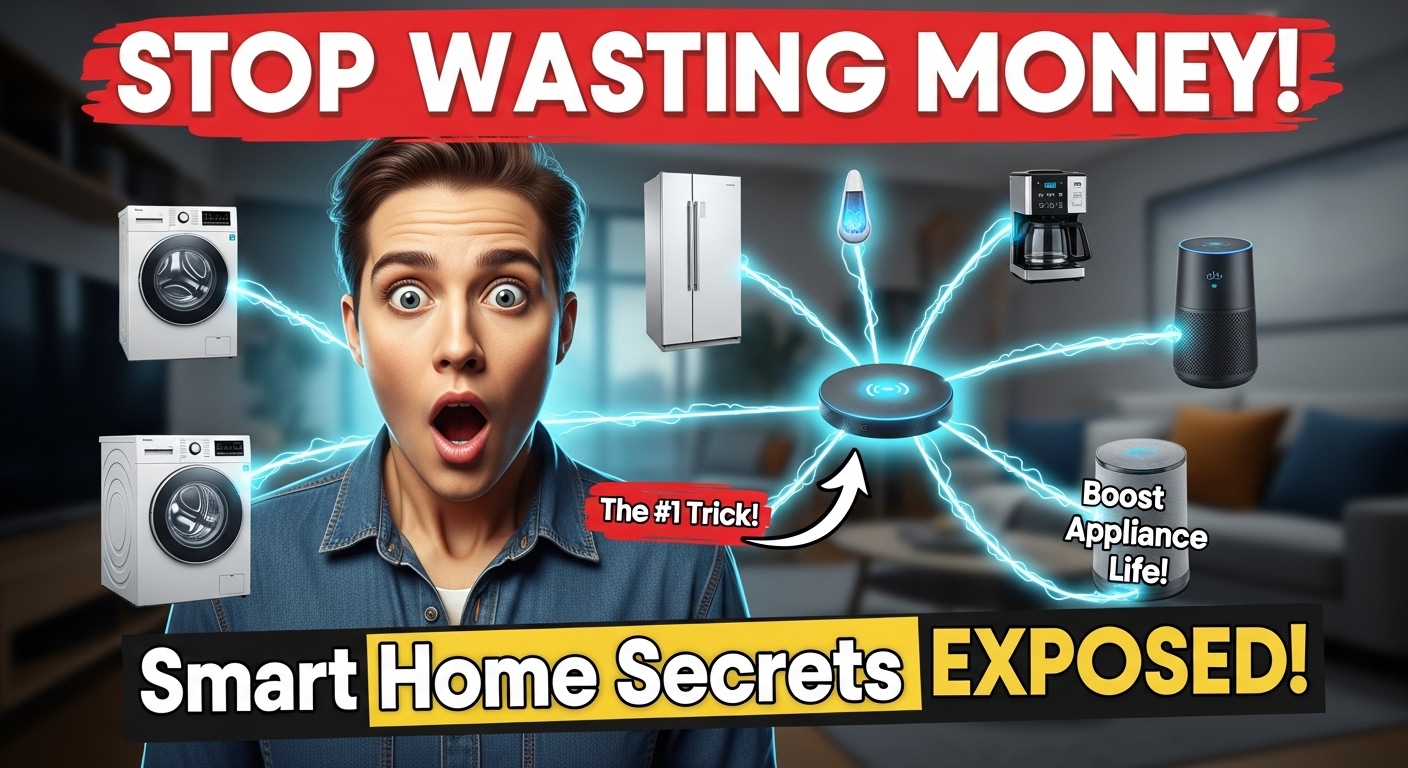Thinking about turning your house into a smart home paradise but feeling overwhelmed by all the tech options out there? Let me walk you through exactly how to connect your appliances for better performance and longevity, plus share some real-world tips that’ll save you from the mistakes I made during my own smart home journey. Picture this: you walk through your front door after a long day, and your home just *knows* what you need. The lights dim to that perfect evening glow, your thermostat adjusts to your ideal temperature, and your security system disarms itself automatically. This isn’t some futuristic fantasy anymore – it’s totally achievable right here in Chilliwack, and honestly, it’s become one of those things that once you have it, you can’t imagine living without it. I’ll admit, when I first started exploring smart home integration, I was that person who thought it was all just fancy gadgets for tech nerds. But after seeing how much easier (and more efficient) my daily routines became, I’m now the friend who won’t stop talking about her smart thermostat’s energy savings. The thing is, connecting your appliances isn’t just about convenience – it’s actually a smart investment that can extend the life of your devices and slash your utility bills. [IMAGE PLACEHOLDER FOR IMAGE1] The beauty of smart home integration lies in how all your devices work together as one cohesive system, rather than operating as isolated gadgets. When your appliances can communicate with each other and respond to your lifestyle patterns, they run more efficiently and experience less wear and tear over time.
Key Outtakes:
- Smart home integration creates a unified system where appliances communicate and optimize performance automatically
- Professional installation ensures proper network setup and device compatibility for seamless operation
- Energy management through connected devices can significantly reduce utility costs and extend appliance lifespan
- Multi-stage installation processes including consultation, setup, and ongoing support maximize system effectiveness
- Voice control and mobile app integration provide convenient access to all connected home features
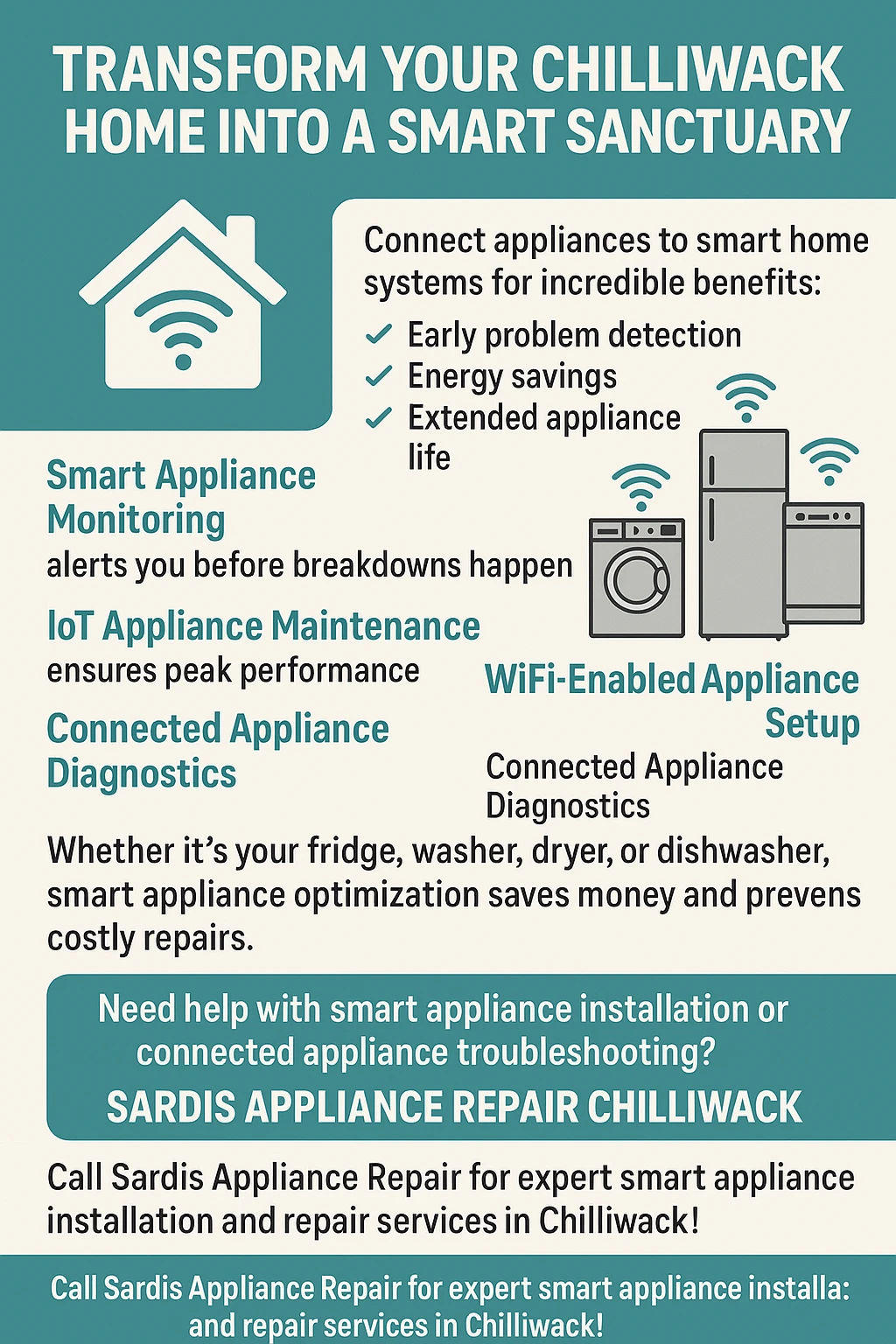
Understanding Smart Home Integration Basics
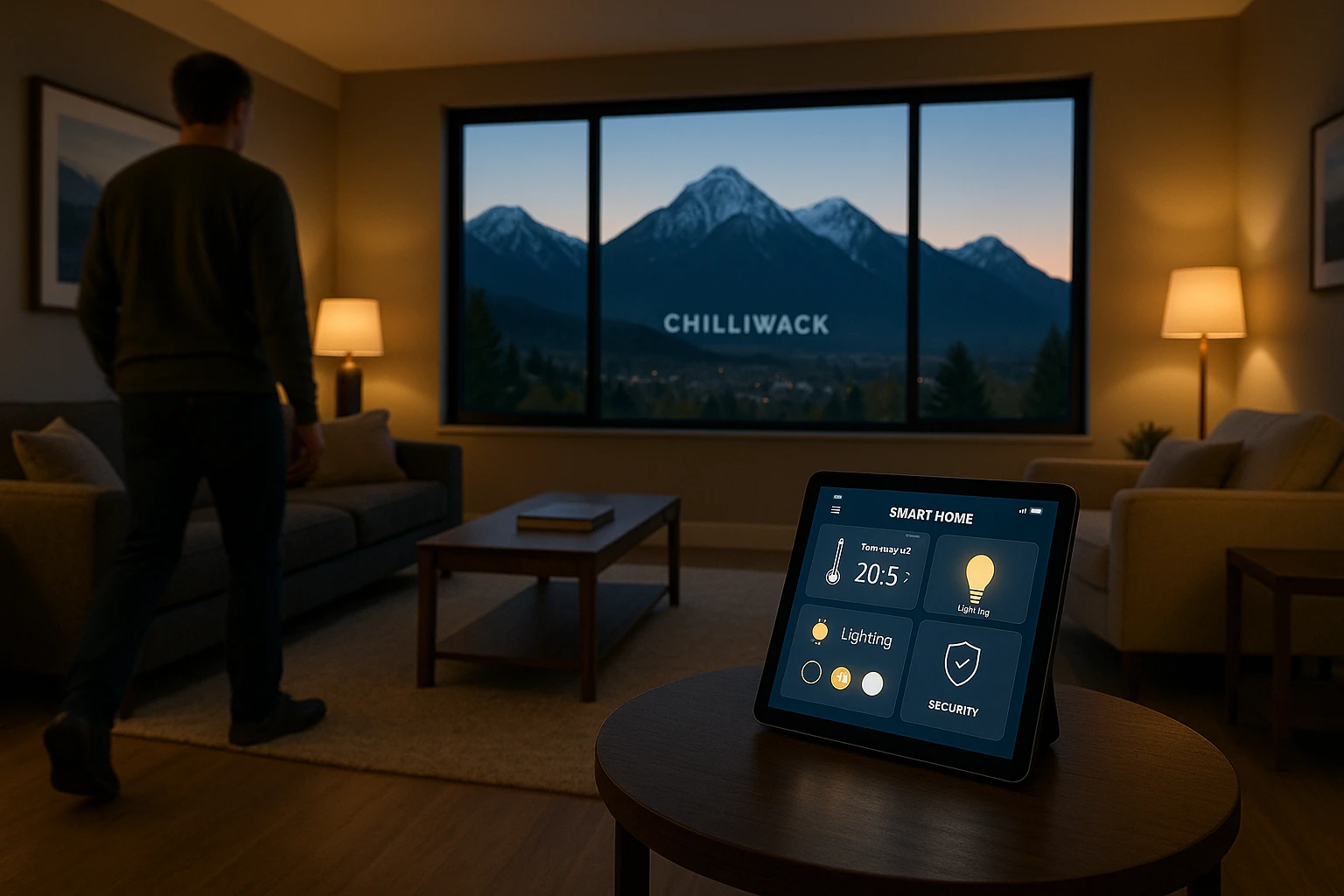 Let’s start with the foundation – what exactly does smart home integration mean, and why should Chilliwack homeowners care about it? At its core, smart home integration is about creating a connected ecosystem where your appliances, lighting, security systems, and climate control all work together seamlessly. Instead of having individual smart devices that operate independently, integration means they can share information and coordinate their actions based on your preferences and daily routines. The magic happens when your smart thermostat talks to your motorized window treatments, automatically adjusting both temperature and natural light based on the time of day and weather conditions. Or when your security system communicates with your lighting to create the perfect welcome-home scenario. This level of coordination isn’t just convenient – it’s actually better for your appliances because they’re not working against each other or running unnecessarily. What makes modern smart home systems so effective is their ability to learn from your behavior patterns and make adjustments that optimize both performance and energy consumption. Your smart water heater might learn that you typically shower at 7 AM and have hot water ready just in time, rather than keeping a full tank heated all night. These small optimizations add up to significant savings on your utility bills and less strain on your appliances. The key difference between having a few smart devices and true smart home integration is the central control system that manages everything. This could be a dedicated smart home hub, a comprehensive app, or even voice control through systems that can handle multiple device types simultaneously. The goal is having one interface that lets you monitor and control your entire home’s connected systems.
Let’s start with the foundation – what exactly does smart home integration mean, and why should Chilliwack homeowners care about it? At its core, smart home integration is about creating a connected ecosystem where your appliances, lighting, security systems, and climate control all work together seamlessly. Instead of having individual smart devices that operate independently, integration means they can share information and coordinate their actions based on your preferences and daily routines. The magic happens when your smart thermostat talks to your motorized window treatments, automatically adjusting both temperature and natural light based on the time of day and weather conditions. Or when your security system communicates with your lighting to create the perfect welcome-home scenario. This level of coordination isn’t just convenient – it’s actually better for your appliances because they’re not working against each other or running unnecessarily. What makes modern smart home systems so effective is their ability to learn from your behavior patterns and make adjustments that optimize both performance and energy consumption. Your smart water heater might learn that you typically shower at 7 AM and have hot water ready just in time, rather than keeping a full tank heated all night. These small optimizations add up to significant savings on your utility bills and less strain on your appliances. The key difference between having a few smart devices and true smart home integration is the central control system that manages everything. This could be a dedicated smart home hub, a comprehensive app, or even voice control through systems that can handle multiple device types simultaneously. The goal is having one interface that lets you monitor and control your entire home’s connected systems.
Essential Components for Smart Home Success
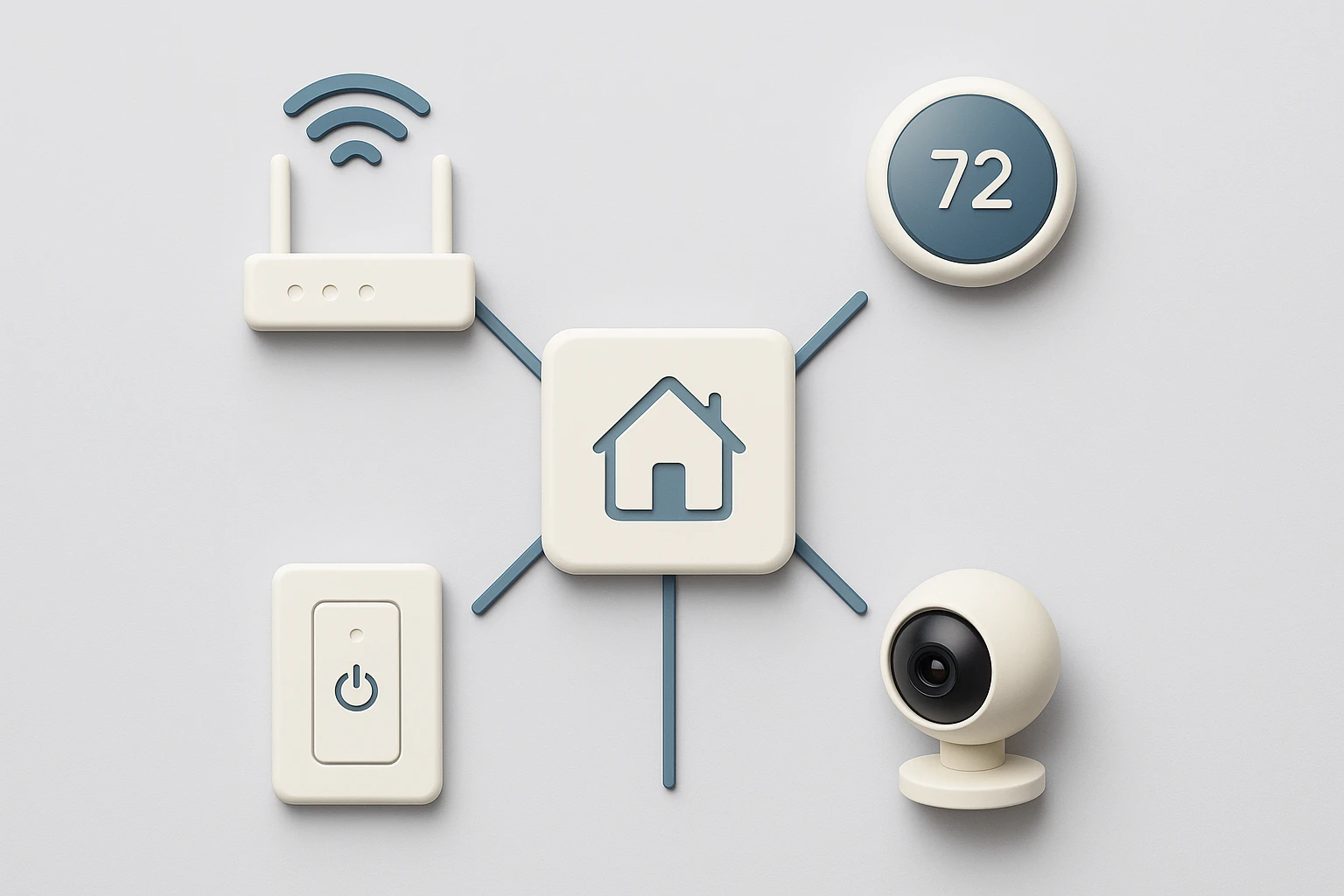 Building on that foundation, let’s talk about the essential components that make smart home integration actually work in real-world conditions. The success of your smart home system depends heavily on having the right infrastructure in place from the start, which is why professional consultation and installation services have become so popular with homeowners who want to avoid the frustration of connectivity issues and device compatibility problems. Your network infrastructure is absolutely critical – and I can’t stress this enough because it’s where most DIY attempts go wrong. You need robust Wi-Fi coverage throughout your entire home, with enough bandwidth to handle multiple connected devices without lag or dropout issues. Many smart home installations require professional-grade network setup with strategically placed access points and proper cable management to ensure reliable connectivity. The central control hub acts as the brain of your smart home system, coordinating communication between different devices and managing automation routines. Modern hubs can integrate devices from multiple manufacturers, which is crucial because you don’t want to be locked into using products from just one brand. The best systems allow you to mix and match devices based on quality and features rather than brand compatibility. Smart switches and outlets form the backbone of your electrical control system, allowing you to automate and control traditional appliances alongside purpose-built smart devices. These components need to be properly installed and configured to handle the electrical loads of your various appliances safely. Professional installation ensures that your electrical system can support the additional smart devices without overloading circuits. Climate control integration typically involves smart thermostats, automated window treatments, and sometimes smart vents or zone control systems. When these components work together, they can dramatically improve your home’s energy efficiency while maintaining optimal comfort levels. The coordination between heating, cooling, and natural light management is where you’ll see some of the biggest performance improvements and energy savings.
Building on that foundation, let’s talk about the essential components that make smart home integration actually work in real-world conditions. The success of your smart home system depends heavily on having the right infrastructure in place from the start, which is why professional consultation and installation services have become so popular with homeowners who want to avoid the frustration of connectivity issues and device compatibility problems. Your network infrastructure is absolutely critical – and I can’t stress this enough because it’s where most DIY attempts go wrong. You need robust Wi-Fi coverage throughout your entire home, with enough bandwidth to handle multiple connected devices without lag or dropout issues. Many smart home installations require professional-grade network setup with strategically placed access points and proper cable management to ensure reliable connectivity. The central control hub acts as the brain of your smart home system, coordinating communication between different devices and managing automation routines. Modern hubs can integrate devices from multiple manufacturers, which is crucial because you don’t want to be locked into using products from just one brand. The best systems allow you to mix and match devices based on quality and features rather than brand compatibility. Smart switches and outlets form the backbone of your electrical control system, allowing you to automate and control traditional appliances alongside purpose-built smart devices. These components need to be properly installed and configured to handle the electrical loads of your various appliances safely. Professional installation ensures that your electrical system can support the additional smart devices without overloading circuits. Climate control integration typically involves smart thermostats, automated window treatments, and sometimes smart vents or zone control systems. When these components work together, they can dramatically improve your home’s energy efficiency while maintaining optimal comfort levels. The coordination between heating, cooling, and natural light management is where you’ll see some of the biggest performance improvements and energy savings.
Professional Installation and Project Management
Now that we’ve covered the components, let’s dive into why professional installation matters so much for smart home integration success. The difference between a smoothly operating smart home and a collection of frustrated attempts at DIY connectivity often comes down to proper project management and professional expertise during the installation process. A comprehensive smart home installation follows a multi-stage process that begins with detailed consultation to understand your specific needs, lifestyle patterns, and budget considerations. During this phase, experienced technicians assess your home’s existing electrical and network infrastructure to identify any upgrades needed for optimal performance. They’ll also discuss your priorities – whether you’re focused on energy savings, security, convenience, or a combination of factors. The pre-wire stage is crucial for new construction or major renovations, where cables for network connectivity, speakers, cameras, and control systems are installed throughout the house before walls are finished. This stage requires careful planning to ensure that cables are routed correctly and that there’s adequate infrastructure for future expansion. Professional installers use centralized wiring approaches with media racks to keep everything organized and easily serviceable. Equipment installation and programming represents the technical heart of the project, where individual devices are connected, configured, and integrated into the overall system. This stage requires extensive knowledge of different device protocols, network configuration, and automation programming. Professional technicians test each component individually and then verify that the integrated system operates correctly as a whole. The final stage involves comprehensive testing, calibration, and user training to ensure that homeowners can operate their new smart home system effectively. Professional installers provide detailed demonstrations of system features and troubleshooting guidance. Many companies also offer ongoing support and maintenance services to keep systems operating optimally over time. Project management coordination ensures that all aspects of the installation process proceed smoothly and on schedule. Dedicated project managers work closely with design teams and installation crews to address any challenges that arise and keep the project moving toward successful completion. This level of coordination is especially important for complex installations that involve multiple systems and several days of work.
Energy Management and Climate Control Integration
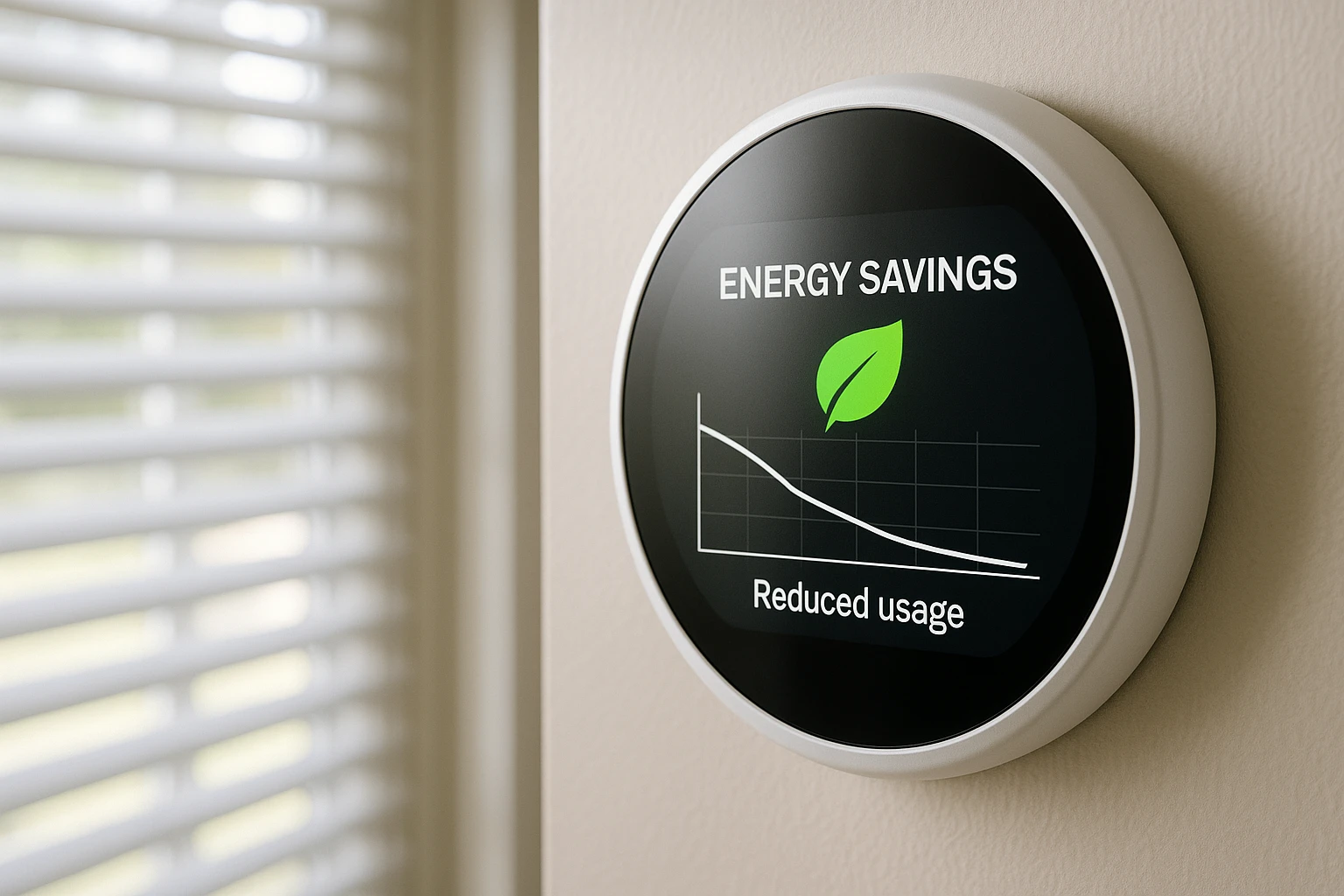 Moving from installation to practical benefits, let’s explore how smart home integration can transform your energy management and climate control systems. This is where many Chilliwack homeowners see the most dramatic improvements in both comfort and utility costs, especially given our region’s varied seasonal weather patterns. Smart thermostat integration goes far beyond simple programmable temperature control. Modern smart climate systems learn your schedule and preferences, automatically adjusting heating and cooling based on occupancy patterns, outdoor weather conditions, and even your utility company’s peak pricing periods. The system can pre-cool your home during off-peak hours in summer or optimize heating cycles to maintain comfort while minimizing energy consumption. Automated window treatments work in coordination with your climate control to maximize natural heating and cooling opportunities. Smart blinds can open during sunny winter days to take advantage of solar heating, then close automatically to retain that warmth after sunset. In summer, they can block intense afternoon sun to reduce cooling loads, then open for natural ventilation during cooler evening hours. Zone control systems take climate optimization even further by allowing different areas of your home to maintain different temperature settings based on usage patterns. Bedrooms can be cooler at night for better sleep while common areas maintain comfortable daytime temperatures. When integrated with occupancy sensors, the system can focus heating and cooling only on areas that are actually being used. Smart water heating integration can significantly reduce one of your home’s largest energy consumers. Connected water heaters can learn your usage patterns and heat water just before it’s needed rather than maintaining constant temperature. Some systems can even coordinate with your home’s solar panels to use excess solar energy for water heating when available. The cumulative effect of these integrated energy management systems often results in utility bill reductions of 20-30% or more, while actually improving comfort and convenience. The systems also reduce wear and tear on individual appliances by optimizing
Moving from installation to practical benefits, let’s explore how smart home integration can transform your energy management and climate control systems. This is where many Chilliwack homeowners see the most dramatic improvements in both comfort and utility costs, especially given our region’s varied seasonal weather patterns. Smart thermostat integration goes far beyond simple programmable temperature control. Modern smart climate systems learn your schedule and preferences, automatically adjusting heating and cooling based on occupancy patterns, outdoor weather conditions, and even your utility company’s peak pricing periods. The system can pre-cool your home during off-peak hours in summer or optimize heating cycles to maintain comfort while minimizing energy consumption. Automated window treatments work in coordination with your climate control to maximize natural heating and cooling opportunities. Smart blinds can open during sunny winter days to take advantage of solar heating, then close automatically to retain that warmth after sunset. In summer, they can block intense afternoon sun to reduce cooling loads, then open for natural ventilation during cooler evening hours. Zone control systems take climate optimization even further by allowing different areas of your home to maintain different temperature settings based on usage patterns. Bedrooms can be cooler at night for better sleep while common areas maintain comfortable daytime temperatures. When integrated with occupancy sensors, the system can focus heating and cooling only on areas that are actually being used. Smart water heating integration can significantly reduce one of your home’s largest energy consumers. Connected water heaters can learn your usage patterns and heat water just before it’s needed rather than maintaining constant temperature. Some systems can even coordinate with your home’s solar panels to use excess solar energy for water heating when available. The cumulative effect of these integrated energy management systems often results in utility bill reductions of 20-30% or more, while actually improving comfort and convenience. The systems also reduce wear and tear on individual appliances by optimizing
 (604) 305-2992
(604) 305-2992 
 Schedule An Appointment
Schedule An Appointment 
